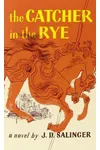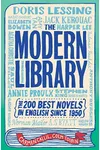Picture an American storyteller who captured the restless heart of youth with a single, timeless novel—meet J.D. Salinger! Born in 1919, Salinger became a literary legend with The Catcher in the Rye, a book that spoke to generations of dreamers and rebels. Yet, just as his star rose, he vanished from the spotlight, crafting stories in solitude until his death in 2010.
His reclusive nature only fueled his mystique, making him as much a cultural enigma as a writer. Let’s dive into the life, works, and lasting legacy of this elusive literary icon.
The Making of J.D. Salinger
Jerome David Salinger grew up in Manhattan, New York, in a world of privilege but also pressure. As a young man, he flirted with writing while attending Columbia University, where his short stories caught the eye of editors. World War II interrupted his early career, and his experiences as a soldier shaped the raw, introspective tone of his work. After the war, Salinger’s stories began appearing in The New Yorker, setting the stage for his breakout success.
J.D. Salinger’s Unforgettable Stories
Salinger’s masterpiece, The Catcher in the Rye (1951), follows Holden Caulfield, a teenage dropout wandering New York City, grappling with alienation and hypocrisy. Its conversational style and unflinching honesty made it a cultural touchstone, though its frank language sparked controversy. The novel’s themes of youthful rebellion resonate even today, inspiring countless readers and writers.
Beyond The Catcher, Salinger’s Nine Stories (1953) showcases his knack for concise, poignant storytelling. Tales like “A Perfect Day for Bananafish” blend humor with heartbreak, exploring human connection and loss. Franny and Zooey (1961) delves into the spiritual struggles of the Glass family, reflecting Salinger’s fascination with Eastern philosophy. His final published work, Raise High the Roof Beam, Carpenters and Seymour: An Introduction (1963), continues the Glass saga with lyrical, introspective prose.
Salinger’s style—marked by sharp dialogue, emotional depth, and a disdain for pretense—set him apart. His characters, often young and searching, wrestle with authenticity in a world that feels hollow, making his work timeless.
Why J.D. Salinger Matters
Salinger’s influence on American literature is undeniable. The Catcher in the Rye remains a rite of passage for teens, its themes of alienation echoing in modern coming-of-age stories. His reclusiveness, while puzzling, inspired a generation of artists to prioritize authenticity over fame. Though he stopped publishing, rumors of unpublished manuscripts keep his legacy alive, sparking curiosity about what stories he left behind.
His work also paved the way for writers like John Green and Stephen Chbosky, who channel similar youthful angst. Salinger didn’t just write books—he gave voice to the restless, hopeful, and heartbroken.
- Born: January 1, 1919, in New York City
- Key Works: The Catcher in the Rye, Nine Stories, Franny and Zooey
- Notable Trait: Famously reclusive, shunning public life after the 1950s
Snag The Catcher in the Rye or Nine Stories and dive into Salinger’s raw, soulful world—it’s a journey worth taking!






